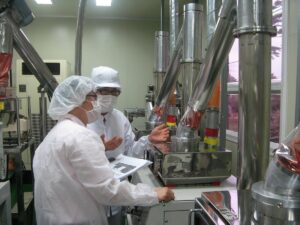 Food – probably the most in-demand commodity on this planet. We literally cannot live without them. But with the rising population accompanied by the rising demand for food, the food industry and processing is as booming as ever. And while agencies have acknowledged that we are running out of space to accommodate for our food demands and that we might encounter a shortage soon, food manufacturers are still trying to churn out as many products as they could and researchers are still coming up with amazing food ideas that even factor in a smaller environmental footprint. But regardless, food is made to nourish and to fulfil us.
Food – probably the most in-demand commodity on this planet. We literally cannot live without them. But with the rising population accompanied by the rising demand for food, the food industry and processing is as booming as ever. And while agencies have acknowledged that we are running out of space to accommodate for our food demands and that we might encounter a shortage soon, food manufacturers are still trying to churn out as many products as they could and researchers are still coming up with amazing food ideas that even factor in a smaller environmental footprint. But regardless, food is made to nourish and to fulfil us.
However, when we are talking about food at a more massive scale – let us say salad dressings or drinks for mass consumption – it becomes more than just a process of mixing and cooking things together as you do in your kitchen. It becomes a science and you begin to enlist the help of not only cooks but chemists and chemical engineers – people who know what chemical compound to add to food to help it being subjected to insane levels of processing while still maintaining its quality and safeness for human consumption.
Now if you have an idea and are wanting to create some food then you will need to contact food manufacturers and find out what classification your product falls under in order to find the right manufacturer for your product. 
Food manufacturing is actually in different classifications according to how much processing it has gone through. So if you are wanting to manufacture food at scale then you will need to contact a food manufacturing company in order to find out what classification your product falls under and what regulations you must meet. For starters, primary food processing is the most basic amongst the classifications. Agricultural products are taken as it is and simply put through a process that does not alter its composition and is usually one of the ancient processes done by humans. Drying and milling grain, butchering, deboning, or smoking meat, or homogenising, or pasteurising milk are some of the best examples of this. However, despite its basic properties, there is still proper food research done for this because contamination and spoilage remain a problem due to the large quantities of products being handled.
A next step up is when ingredients are now started to be put together to form another entity. A process is not just simply applied to a product but to either a multitude or a mixture of a bunch of ingredients, simply like cooking. Secondary food processing is when you create a separate food from ingredients that are ready to use. Manufacturing bread, making wine, or processing meat to make sausages are examples of this.
And lastly is what we call tertiary processed foods. These are food that is processed beyond the cooking phase either to optimise flavour or preserve. A good example of this is ready meals or TV dinners or instant noodles. And while the general consensus for these kinds of food is that they are manufactured to optimise the ease of consumption, there are processed foods that are not as bad as it seems. But regardless, these food are subjected to a little bit more manufacturing and if it eases the consumers’ mind, more food research, and development. Reading the ingredients list of any processed food and you would encounter things you would not even know how to pronounce. Sometimes, the foreign quality of these words makes consumer veer towards a more organic meal but it should be noted that these ingredients were specifically added to counter the bad chemical reactions raw food usually get as time goes by. What people do not know does not necessarily mean it is harmful to them.
Food processing and manufacturing is an innovation that we have learned to optimise to accommodate to our rising demand.







